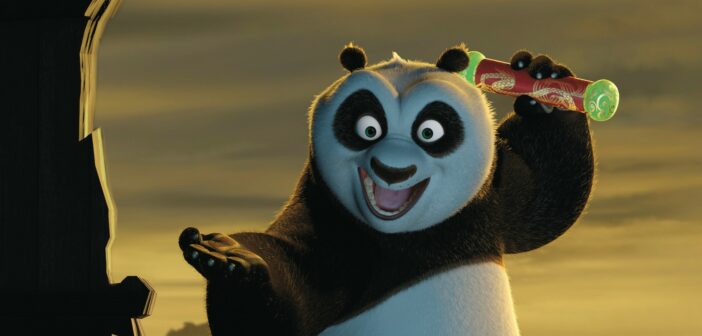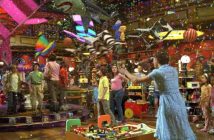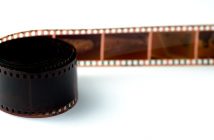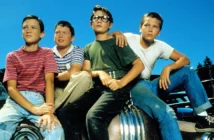After Disney’s Renaissance period fizzled out by the end of the 1990s, the stage was set for two newer animation studios to wage war at the cinema: Pixar and DreamWorks. One focused on emotionally galvanising films for children and adults alike, whilst the other pioneered cracking soundtracks, screenplays infused with pop-culture gags and a talking donkey voiced by Eddie Murphy. Two writers enter the ring to debate the real winner of the noughties…
DreamWorks
Let me be the first to say I love Pixar, there’s no disputing that. What is disputable though is whether Pixar can really be considered the greatest family-friendly animation company when you have DreamWorks offering the likes of Shrek, Over The Hedge, Shark Tale, Kung-fu Panda, Flushed Away, and even the Wallace and Gromit movies. Whilst Pixar has put out some classics via Disney’s distribution, they have also often fallen into quasi-moralising stories that emphasise the children of the family, rather than the family as a collective. Quite simply, Pixar plays it too safe, each story a new skin of the same message, which (although entertaining, sometimes poignant, and often heartbreaking) fail to surprise anymore. The creative minds at Pixar don’t seem to be able to make a movie without parodying its own themes of trying to teach you the importance of self-discovery, acceptance, or some other fundamental idea on what it means to be human (even when their stories aren’t inherently about humans).

DreamWorks Pictures
DreamWorks, on the other hand, takes risks. They’re not afraid to stuff their films to the brim with innuendos and adult-centered jokes. They’re aware of the adults and older teens of the family-film dynamic and constantly try to make a film that’s entertaining for all. Historically, Pixar never quite nails this, Toy Story 4 is a prime example of when the company misjudged who to make their film primarily for, creating a critical masterpiece that a lot of children found quite boring. DreamWorks also leans more heavily into anthropomorphism, which helps remove it from reality and creates a foundation to be funny and explorative with their themes. Sure, Shrek can be interpreted to be about loving yourself, Flushed Away a satire on class, and even Kung-fu Panda is about acceptance, but they’re never the center focus, and the entertainment of the piece receives the love it deserves. It also helps that DreamWorks is always ready to satirise its competition, such as Shrek’s biting commentary on the tropes of feminism and female passivity in Disney films as just one example.
Plus, DreamWorks’ movies have a longevity to them that Pixar is less assured of. True, Toy Story, Up, and Wall-E are household staples to this day, but the majority of Pixar films have a short life-span, while DreamWorks films ingrain themselves in pop-culture and garner the status of iconic in a way Pixar only dreams of. DreamWorks films are more aware of who their audiences are and what they like, crafting utilitarian films whilst Pixar neglects parts of their audience.
Sam Pegg
Pixar
When I think of animated films, I immediately think of Pixar and their rich catalogue of films from what I believe to be their ‘golden age’ in the 2000s. Several of Pixar’s best loved films of this decade (Finding Nemo, WALL-E, Monsters Inc.) all came from the same brainstorming session in 1994, however, incredibly, all of their early projects remain distinct from each other, both in the themes addressed and the creative worlds explored. Whilst DreamWorks relied on milking their successful franchises (Shrek, Madagascar) in the noughties, Pixar remained totally original in their output, resulting in some of the most creative concepts and characters that have come out of the animated medium.

Pixar Animation Studios
Throughout the noughties, DreamWorks attempted to flood the market with family-oriented animated films, however I believe that Pixar’s more reserved offering helped retain its seal of quality that the studio is now known for. Some of the films noted as DreamWorks’ top offerings were in fact created in tandem with other studios (most notably Aardman Animation for Chicken Run and Wallace and Gromit: The Curse of the Were-Rabbit) and so I raise my eyebrow as to how much DreamWorks fans can claim them as solely belonging to that studio. For every Shrek or Kung-Fu Panda, there is equally a Monsters Vs Aliens or a Shark Tale that was panned by critics at the time. In terms of box office sales, Pixar leads the pack with Finding Nemo as the number one box office success of the decade and matches DreamWorks total of four films in the top 10 list of the decade, despite DreamWorks releasing more films in this period. They also won a total of five Best Animated Feature Academy Awards in the 2000s, to DreamWorks three. There is therefore a strong argument to be made about Pixar’s consistency in both pleasing their audiences and maintaining quality control.
My favourite Pixar film, WALL-E, still looks incredible to this day and was ahead of its time in its discussion of environmental issues and mass-consumption. I do not believe that any other studio would have been as brave to release a film where the main character does not speak, and yet Pixar have somehow made the idea work to great effect in its execution. While some may point to DreamWorks’ impact on pop-culture (mainly thanks to the Shrek franchise), I do not believe that Pixar’s offering have disappeared from the public consciousness either – the bizarre, crowd-sourced Ratatouille TikTok Musical that trended in 2020 sits alongside the many memes and internet jokes from Cars and The Incredibles that are just a few examples of how Pixar films have worked their way into internet culture just as much as Shrek or Kung-Fu Panda have. Furthermore, it is worth noting that DreamWorks’ ‘fish’ and ‘rat’ based films came after Pixar’s ‘fish’ and ‘rat’ based films.

Pixar Animation Studios
While DreamWorks sometimes plays it safe and aims to land jokes to appeal to kids, Pixar reaches for the hardest hitting emotional moments that can be found in animation, whether that be the opening scene from Up or the Axiom Scenes from Wall-E. If only How to Train Your Dragon had released in 2009 and not 2010, I may have considered calling this a draw, but alas that is not the case…
Oliver Picken




